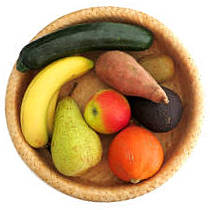How to Fight and Relieve Asthma Symptoms Naturally Through Nutrition
Your one-stop source for information on the optimal diet, the top 19 foods, and the best recipes for preventing and relieving asthma symptoms.

Asthma is a respiratory disorder affecting the airways of the lungs. The airways of asthma sufferers occasionally constrict, become inflamed, and start making more mucus, often in response to an allergen (such as cold air, exercise, infection, tobacco smoke, or emotional stress). This may result in symptoms like wheezing, coughing (especially at night), trouble breathing, or a feeling of constriction within the chest. Some asthmatics may have no symptoms for long periods of time but are then suddenly attacked by asthma symptoms, while others experience symptoms more frequently.
Asthma has gained much public attention in recent years, as the condition is rapidly becoming more prevalent, afflicting almost 20 million Americans today.
The most effective way of controlling asthma is identifying triggers of the attacks and limiting exposure to them. However, if trigger avoidance is insufficient, a number of drugs are available. Moreover, nutritional choices may also help reduce attacks and the severity of symptoms.
This Nutrition Guide for Asthma Sufferers aims to provide comprehensive information on how to fight asthma naturally at home with food and proper nutrition.
Important Notice: The information on this website, including the information above, has not been verified for correctness or completeness, and some of the information may not be correct. Information included on this website is not a substitute for professional nutrition advice or for professional medical or health advice, examination, diagnosis or treatment. Always seek the advice of your physician or other qualified health professional before starting any new treatment, making any changes to existing treatment or altering your current exercise or diet regimen.

